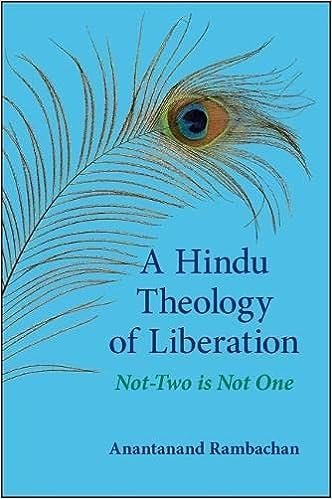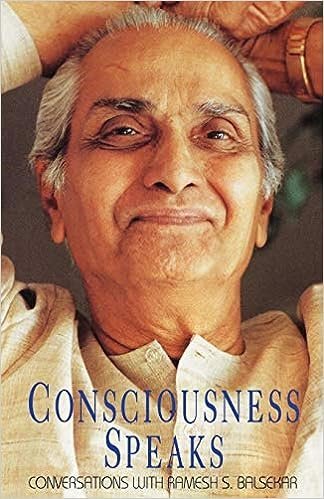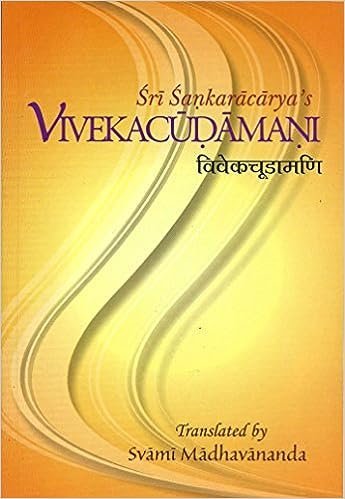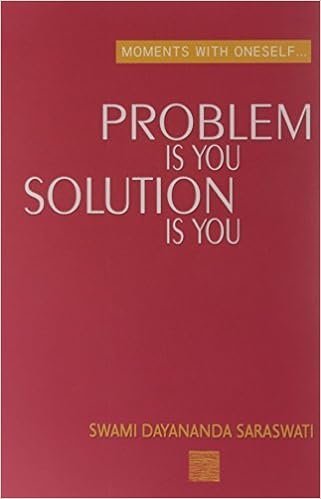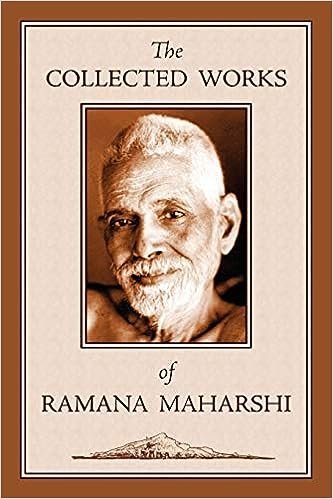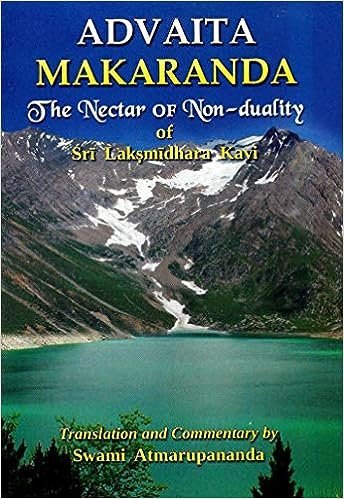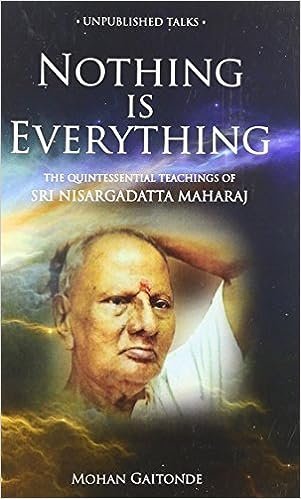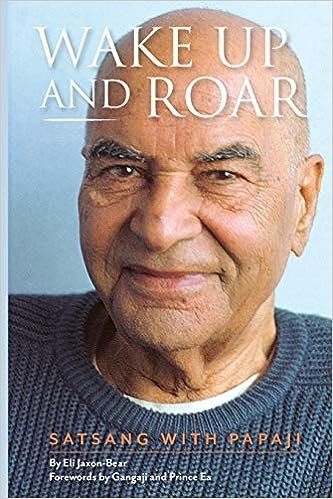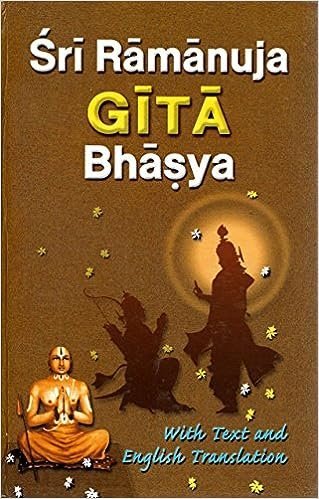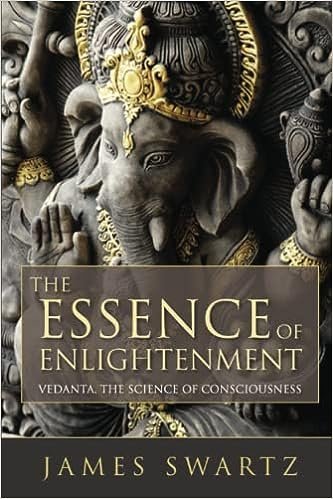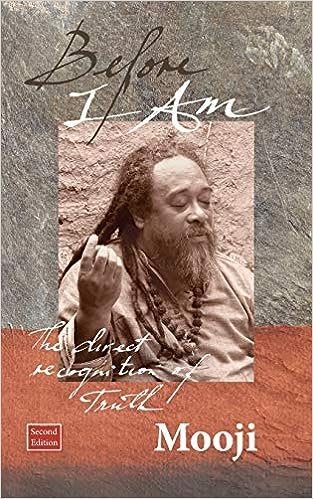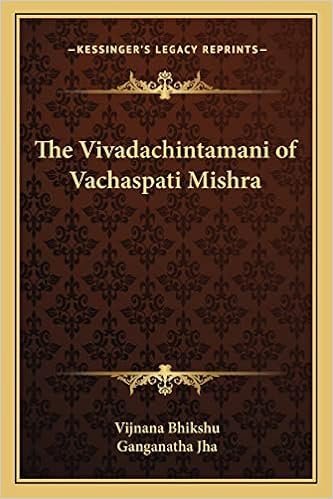What was the nature of Vedanta before Advaita Vedanta?
The Origins and Evolution of Vedic Wisdom: A Comprehensive Guide
Before the advent of Advaita Vedanta by Adi Shankaracharya, Vedanta was primarily based on the interpretations of the Upanishads, Brahma Sutras, and the Bhagavad Gita. Various schools of thought within Vedanta each had their interpretation of these texts. This article delves into the origins of Vedantic philosophy and the contributions of critical schools and teachers.

The Origins of Vedanta
Vedanta originated in ancient India and is rooted in the Upanishads, part of the Vedic literature. The Upanishads were composed over several centuries, with the earliest texts dating back to around 800-500 BCE. The term “Vedanta” itself means “the end of the Vedas,” signifying that it represents the Vedic texts’ philosophical conclusions and spiritual essence.

Prominent Schools of Vedanta
Dvaita Vedanta
Founded by Madhvacharya, who lived between 1238 and 1317 CE.
- Introduced the concept of dualism between the individual soul (Jiva) and the ultimate reality (Brahman).
- Emphasized devotion (bhakti) to the supreme deity, Vishnu, as the path to liberation.
“The soul and God are eternally distinct; the former is the servant, and the latter is the master.”
“Devotion is the only path to liberation; all other paths lead to bondage.”
Vishishtadvaita Vedanta
Proposed by Ramanuja – lived between 1017 and 1137 CE.
- Proposed that the individual soul and the ultimate reality are qualitatively similar but not identical.
- Advocated for devotion and surrender to God as the path to liberation.
“The individual soul is not separate from the Lord, just as a wave is not separate from the ocean.”
“God is the inner controller (Antaryamin) of the universe and the individual souls.”
(Click on Image)
Bhedabheda Vedanta – ancient and predates both Dvaita and Vishishtadvaita.
- Suggested that the individual soul is both different and non-different from the ultimate reality.
- Served as a bridge between dualistic and non-dualistic interpretations of Vedanta.
“The soul is both different and non-different from the ultimate reality like a ray of sunlight is to the sun.”
“The soul and the ultimate reality are like the river and the ocean—distinct yet ultimately merging into one.”
Each of these schools has significantly contributed to spiritual knowledge by offering unique perspectives on the nature of reality, the soul, and the path to liberation. They have enriched the Vedantic tradition and provided diverse paths for spiritual seekers.

The Emergence of Advaita Vedanta from Vedanta: Context and Significance
Advaita Vedanta emerged as a distinct school of Vedanta philosophy around the 8th century CE, primarily through the teachings of Adi Shankaracharya. Before the advent of Advaita Vedanta, Vedanta was already a well-established philosophical system based on the interpretations of the Upanishads, Brahma Sutras, and the Bhagavad Gita. Various schools like Dvaita, Vishishtadvaita, and Bhedabheda had unique perspectives on the relationship between the individual soul (Jiva) and the ultimate reality (Brahman).
The Need for Advaita Vedanta
- Simplification and Unification: One of the reasons for the emergence of Advaita Vedanta was the need to simplify and unify the diverse interpretations of Vedantic texts. The existing schools had various views on dualism, qualified non-dualism, and other complex relationships between Jiva and Brahman.
- Philosophical Completion: Advaita Vedanta aimed to provide a more comprehensive philosophical framework that could encompass and explain the essence of all Upanishadic teachings.
- Spiritual Liberation: Advaita also focused on the direct experience of the ultimate reality as the means to spiritual liberation, bypassing ritualistic practices and dogmas that had become prevalent.
The Teachings of Adi Shankaracharya
Adi Shankaracharya, the most prominent teacher of Advaita Vedanta, argued for the non-dual nature of reality. He posited that the individual soul and Brahman are not just similar or closely related but are essentially one and the same. His teachings can be summarized in the famous phrase:
“Brahma Satyam, Jagat Mithya; Jivo Brahmaiva Na Aparah” (Brahman is the only truth, the world is illusory, and there is ultimately no difference between Brahman and the individual soul)
Impact and Legacy
Advaita Vedanta had a profound impact on Indian philosophy and spirituality. It offered a more straightforward path to spiritual realization through self-inquiry and meditation, emphasizing the experiential aspect of spirituality over ritualistic practices. The school attracted a large following and produced numerous texts and commentaries that further enriched the Vedantic tradition.
Advaita Vedanta emerged as a response to the complex philosophical landscape of its time, aiming to provide a more unified and straightforward interpretation of Vedantic teachings. It shifted the focus from ritualistic practices and philosophical debates to the direct experience of the ultimate reality, offering a transformative path to spiritual liberation.

The Evolution and Impact of Adi Shankaracharya’s Teachings on Nonduality
Adi Shankaracharya, an 8th-century Indian philosopher, and theologian, is often credited as the first known teacher of nonduality. He consolidated the doctrine of Advaita Vedanta, a sub-school of Vedanta that emphasizes the concept of nonduality. This article delves into the evolution of his teachings and their lasting impact on spiritual philosophy.
The Essence of Advaita Vedanta
Shankaracharya’s teachings were rooted in Advaita Vedanta. The term “Advaita” means “not two,” signifying the nondual nature of reality, where the individual self (Atman) and the ultimate reality (Brahman) are considered to be the same.
Evolution of Shankaracharya’s Teachings
Shankaracharya’s teachings evolved as a synthesis of existing Vedantic thought, aiming to resolve the complexities and contradictions among various schools of philosophy. He traveled extensively, debating with scholars from different traditions to propagate his views on Advaita Vedanta.
Quotes that Capture the Essence of Shankaracharya’s Teachings
- “Aham Brahmasmi” (I am Brahman)
- “Tat Tvam Asi” (You are That)
- “Sarvam Khalvidam Brahma” (All this is Brahman)
- “Nirvana Shatakam” (I am not the mind, nor the body, but pure existence)
- “Neti Neti” (Not this, not this, to describe the indescribable Brahman)
- “Satyam Jnanam Anantam Brahma” (Brahman is truth, knowledge, and infinite)
Global Influence and Legacy
Shankaracharya’s teachings had a profound impact, not just in India but globally. His philosophy found resonance in other spiritual traditions, including Buddhism and Taoism.
“The Self is Brahman. All is Brahman. All is the Self.”
Adi Shankaracharya’s teachings on Advaita Vedanta have had a lasting impact on spiritual philosophy. His interpretation of nonduality as the ultimate reality has influenced various spiritual traditions and continues to inspire seekers worldwide.

The Evolution of Advaita Vedanta Since Adi Shankaracharya: A Timeline of Teachers and Teachings
Advaita Vedanta, a nondualistic school of Hindu philosophy, was consolidated by Adi Shankaracharya in the early 8th century CE. Since then, the tradition has seen a series of significant teachers who have enriched and expanded upon the original teachings.
Post-Shankaracharya Period (8th – 10th Century CE)
Vachaspati Mishra (9th Century CE)
Known for his commentary on Shankaracharya’s Brahmasutrabhasya, called Bhamati.
“The ultimate goal of life is to realize the non-dual nature of the self.”
“Ignorance of one’s true nature is the root of all suffering.”
Padmapada (8th Century CE)
A direct disciple of Shankaracharya, he wrote the Panchapadika, a commentary on the first five sutras of the Brahmasutrabhasya.
“The self is beyond the body and mind; it is pure, eternal, and free.”
“The world is not separate from Brahman, just as waves are not separate from the ocean.”
Sureshvara (8th – 9th Century CE)
Another disciple of Shankaracharya he wrote Vartika, a commentary on Shankaracharya’s Taittiriya and Brihadaranyaka Upanishad Bhashyas.
“Knowledge alone can lead to liberation, for ignorance is the cause of bondage.”
“The ultimate reality is beyond words and concepts.”
Medieval Period (10th – 17th Century CE)
Madhusudana Saraswati (16th Century CE)
Known for his work Advaitasiddhi, which defends the Advaita philosophy against the criticisms of dualistic schools.
“The world is a mere appearance; Brahman alone is the reality.”
“The essence of Advaita is the unity of the soul and Brahman.”
Appayya Dikshita (16th Century CE)
Wrote Parimala, a super-commentary on Amalananda’s Kalpataru, which is a sub-commentary on Vachaspati Mishra’s Bhamati.
“The essence of all scriptures is the realization of the non-dual nature of the self.”
“Duality is a product of the mind.”
Modern Period (19th – 20th Century CE)
Ramana Maharshi (1879 – 1950)
He revived interest in Advaita Vedanta in the modern era through the practice of self-inquiry.
“Who am I? Not the body, because it is decaying; not the mind, because the brain will decay with the body; not the personality, nor the emotions, for these also will vanish with death.”
“The self is always there; it is you. Nothing can exist without it.”
Swami Vivekananda (1863 – 1902)
Spread Advaita Vedanta to the West and emphasized its practical aspects.
“You are the soul, free and eternal, ever free, ever blessed. Have faith enough and you will be free in a minute.”
“Truth does not pay homage to any society, ancient or modern. Society has to pay homage to Truth or die.”
(Click on Image)
Swami Sivananda (1887 – 1963)
Founded the Divine Life Society and wrote over 200 books on yoga, Vedanta, and other subjects.
“You are the master of your destiny. You can change your nature. You are the architect of your own fate.”
“Realize the Self. The kingdom of God is within you.”
Advaita Vedanta continues to be a vibrant tradition, with contemporary teachers and schools making significant contributions to spirituality in India and worldwide. This article highlights some of the current figures and institutions that have a substantial impact.
Advaita Vedanta has evolved significantly since the time of Adi Shankaracharya, with each teacher adding a unique layer of interpretation and understanding. These teachings, spanning over a millennium, continue to guide spiritual seekers in their quest for the ultimate truth.

Current Advaita Vedanta Teachers and Schools: Shaping Modern Spirituality
Dr. Vijai S Shankar
Dr. Vijai S Shankar is the founder of the Academy of Advaita. He has been instrumental in spreading the teachings of Advaita Vedanta in a contemporary context. Dr. Shankar emphasizes the illusory nature of the world and news.
“News is exciting to the young and old alike if it fits into their belief systems. Man thinks no news is good news because he fears that news may bring in tidings that do not fit his beliefs. He needs to understand that no news is good news and that any news is good news, for all news is illusory in an illusory world. News that conveys this understanding is good news.”
Mooji
Mooji is a spiritual teacher originally from Jamaica who has been a significant voice in modern Advaita Vedanta. He often holds “satsangs” or spiritual gatherings where he guides people towards self-realization.
“Find that place which is effortlessly at rest within itself. Be there—be one with that.”
“You are not here to change the world; the world is here to change you.”
“Step into the fire of self-discovery. This fire will not burn you; it will only burn what you are not.”
James Swartz
James Swartz is an American teacher of Vedanta and has been teaching for over 40 years. He has written several books and offers online courses.
“You are not what you think you are. But what you think… you are”.
Swami Sarvapriyananda
Swami Sarvapriyananda is a monk of the Ramakrishna Order who has been teaching Vedanta in the West. He is currently the Minister and Spiritual Leader of the Vedanta Society of New York.
“The world is not an illusion; the world is a reality, but it is not the ultimate reality”.
The Vedanta Society
One of the oldest organizations in the West, founded by Swami Vivekananda, it continues to be a significant platform for Advaita Vedanta.
“You have to grow from the inside out. None can teach you, none can make you spiritual.”
“There is no other teacher but your own soul.”

Controversies and Challenges Surrounding Advaita Vedanta
Despite its profound philosophical insights and widespread influence, Advaita Vedanta has not been without its share of controversies, objections, and challenges. Below are some of the key areas where Advaita Vedanta has faced scrutiny.
Philosophical Challenges
Dualism vs. Nondualism
One of the most significant challenges comes from dualistic schools of thought, particularly Dvaita Vedanta, which fundamentally disagrees with Advaita’s nondualistic interpretation of reality.
“The soul and God are eternally distinct.” – Madhvacharya
Plurality of Reality
Another philosophical challenge comes from the Vishishtadvaita school, which argues for a qualified nondualism, asserting that the world and souls are real but also a part of Brahman.
“The individual soul is a mode of Brahman.” – Ramanuja
Social and Cultural Objections
Elitism
Advaita Vedanta has been criticized for being elitist, as traditional teachings often emphasize the study of scriptures, which were historically not accessible to everyone.
“Advaita is for the elite.” – Critic’s perspective
Gender Bias
The traditional Advaita Vedanta has been criticized for its gender bias, particularly regarding who can attain enlightenment.
“Why are women excluded from the path of knowledge?” – Feminist critique
Theological Controversies
Relationship with Monotheism
Advaita Vedanta’s concept of an impersonal Brahman has been a point of contention among monotheistic religions, which believe in a personal God.
“God is personal and listens to our prayers.” – Monotheistic perspective
Scriptural Interpretation
Advaita’s interpretation of key scriptures like the Upanishads and the Bhagavad Gita has also been a point of debate among various schools of Vedanta.
“The scriptures speak of duality, not nonduality.” – Scriptural purist’s view.
Modern-day Skepticism
Scientific Scrutiny
In the modern age, the metaphysical claims of Advaita Vedanta have come under scrutiny from the scientific community.
“Where is the empirical evidence for Brahman?” – Scientific critique

The Living Proof: Realization in the Lineage of Advaita Vedanta
Advaita Vedanta is not just a theoretical philosophy but a living tradition. The proof, as they say, is in the pudding. The lineage of Advaita Vedanta is adorned with sages, mystics, and seekers who have reached varying degrees of realization, some even attaining the ultimate state of enlightenment.
Realization: The Ultimate Testimony
The most compelling evidence for the validity of Advaita Vedanta is the phenomenal history of individuals who have reached states of realization. These are not mere claims but lived experiences that transcend ordinary states of consciousness.
“The Self is self-evident. No one can doubt his own being.” – Ramana Maharshi
The Limitations of Duality
For those locked in the framework of duality, understanding nonduality is like a fish trying to grasp the concept of dry land. It’s not within the realm of their experience.
“The dualistic mind cannot comprehend the non-dual state.” – Nisargadatta Maharaj
Beyond Mental Constructs
Nonduality is not a mental construct; it’s a direct experience. It’s not something that the dualistic mind cannot imagine or conceptualize.
“Truth is not a reward for good behavior, nor a prize for passing some tests. It cannot be brought about. It is the primary, the unborn, the ancient source of all that is.” – Nisargadatta Maharaj
The Lineage of Realization
The lineage of Advaita Vedanta is filled with individuals who have had profound experiences of realization, whether partial or total. These experiences serve as a beacon, guiding seekers on their spiritual journey.
“You are the unchangeable Awareness in which all activity takes place.” – Papaji
“You are not in the world; the world is in you.” – Adi Shankaracharya
The Ineffable Experience
The experience of nonduality is ineffable and beyond the grasp of language. Those who have tasted it know that it’s the ultimate reality, but it’s not something that can be conveyed to someone entrenched in dualistic thinking.
“Words are but the shell; the kernel is in the silence.” – Ramana Maharshi
(Click on Image)



